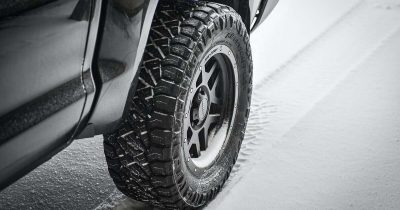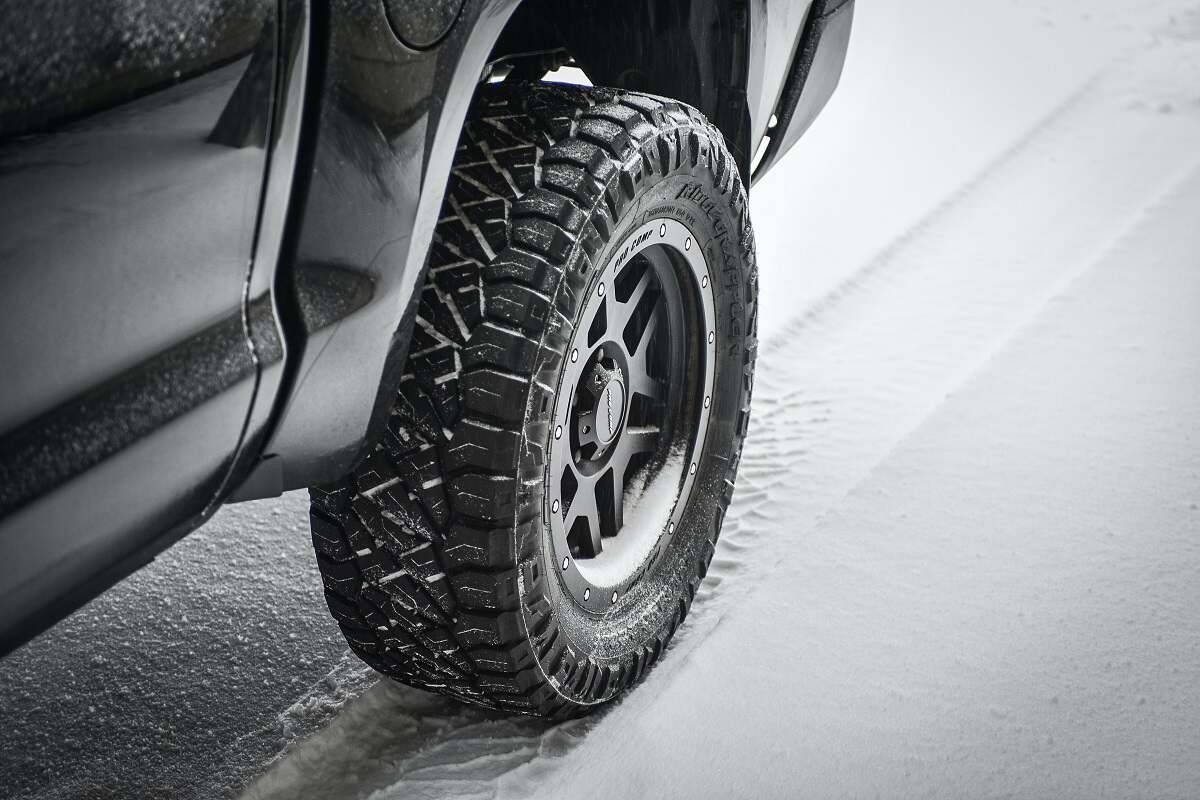As soon as snow, slush and ice cover the roads, winter tires are indispensable. As the only contact with the road, they influence braking behavior, cornering stability and traction. They offer improved grip and reduce the risk of accidents in winter road conditions. However, there are a number of points to consider when buying winter tires. We tell you which criteria are important to ensure that company car drivers are safe on the road even in snow, slush and ice.
Contents
What are winter tires for?
Winter tires have a significantly shorter braking distance on slippery surfaces. The special tread pattern and rubber compound enable better grip and effective braking in icy and snowy road conditions. They also enable more precise steering and better control when cornering, which minimizes the risk of skidding and accidents.
Winter tires should be stored in a cool, dry place and protected from direct sunlight. Avoid contact with oils and chemicals and in case you store tires in your fleet yourself: Use tire racks or stands to avoid deformation
The right time for winter tires
The driver of a motor vehicle may only drive it on black ice, slippery snow, slush, black ice or slippery frost if all wheels are fitted with tires that meet the requirements of Section 36 (4) of the Road Traffic Licensing Regulations, without prejudice to the general requirements for tires.
This means that in winter road conditions with ice, slippery roads or slush, you may only drive with winter tires. If you are caught driving without winter tires, you could be fined 60 euros and receive one point in Flensburg.
It is therefore advisable to fit winter tires at the beginning of October. Drivers will then be safe on the road even in the event of a sudden onset of winter. Find out about suitable tires in good time and make appointments to have them changed so that your fleet is ready for the winter. Incidentally, the demand for winter tires is particularly low in summer and the chance of getting new tires at a lower price is particularly high.
Winter tire criteria to consider when choosing
To ensure that company car drivers can drive safely on slippery, snowy or slushy surfaces in winter, you should pay attention to various criteria when choosing tires. These include:
Tread depth and sipe density
The depth of the tread pattern and the density of the sipes have a significant influence on grip on snow and wet roads. A deeper tread pattern and a higher sipe density provide better traction and drainage of water and snow.
A minimum tread depth of 1.6 millimetres is required by law for winter and summer tires. However, the ADAC recommends a tread depth of approx. 4 millimeters and many manufacturers strongly advise against going below a depth of 2 millimeters. You should therefore not only ensure that new tires have sufficient tread, but also regularly check the tread depth of existing tires.
The tiny incisions on winter tires are sipes that drain water and interlock with snow and ice. This further improves grip on the road.

Rubber compound
Snowflake symbol
Tire width and pressure
The dimensions of the tire influence stability and traction. Wider tires often offer more contact area, which can improve traction. The cross-section influences handling and driving stability. The correct tire pressure also influences the grip and handling of winter tires. Regular inspection and adjustment according to the manufacturer’s specifications are important to achieve optimum performance.
Quality
When choosing tires, pay attention to quality and it is best to go for brand manufacturers. Tires from no-name manufacturers are usually made of inferior materials that have a poorer grip on the road surface and therefore cause longer braking distances.
Anyone who is unsure about the winter tire criteria can seek advice from a qualified tire dealer. They offer valuable expertise on the right winter tires for specific vehicle types and models, taking into account factors such as driving style, vehicle weight and climatic conditions. Test results in specialist magazines and tire comparison portals also provide independent assessments to help you make an informed decision for your fleet.
Technological innovations in the field of winter tires
The world of winter tires has expanded with technological innovations that improve performance and increase safety.
- Studless tires, such as the Bridgestone Blizzak WS90, offer optimum grip on snow and ice thanks to special rubber compounds and tread design.
- Studded tires, such as the Nokian Hakkapeliitta 9, use metal studs for superior grip on icy surfaces. However, studded tires can be noisier on dry or wet roads and can damage the pavement.
- All-weather tires: Manufacturers like Michelin are working on innovative tires like the CrossClimate 2, which combines the benefits of summer and winter tires. These all-weather options offer good performance all year round and reduce the need for seasonal tire changes.
The most important winter tire criteria at a glance
Winter tires are tires specially developed for winter road conditions with a shorter braking distance, better grip and stronger interlocking with the road surface.
In Germany, winter tires are mandatory in certain situations: as soon as the road conditions are icy, slushy or snowy, winter tires must be used.
The criteria for winter tires include tread depth, rubber compound, tire pressure and width. Also make sure you buy high-quality tires from brand manufacturers.
Further Fleet Knowledge
If you liked this article and would like to know more about this topic, we recommend these articles.

Workshop checklist: How to find the best workshop




